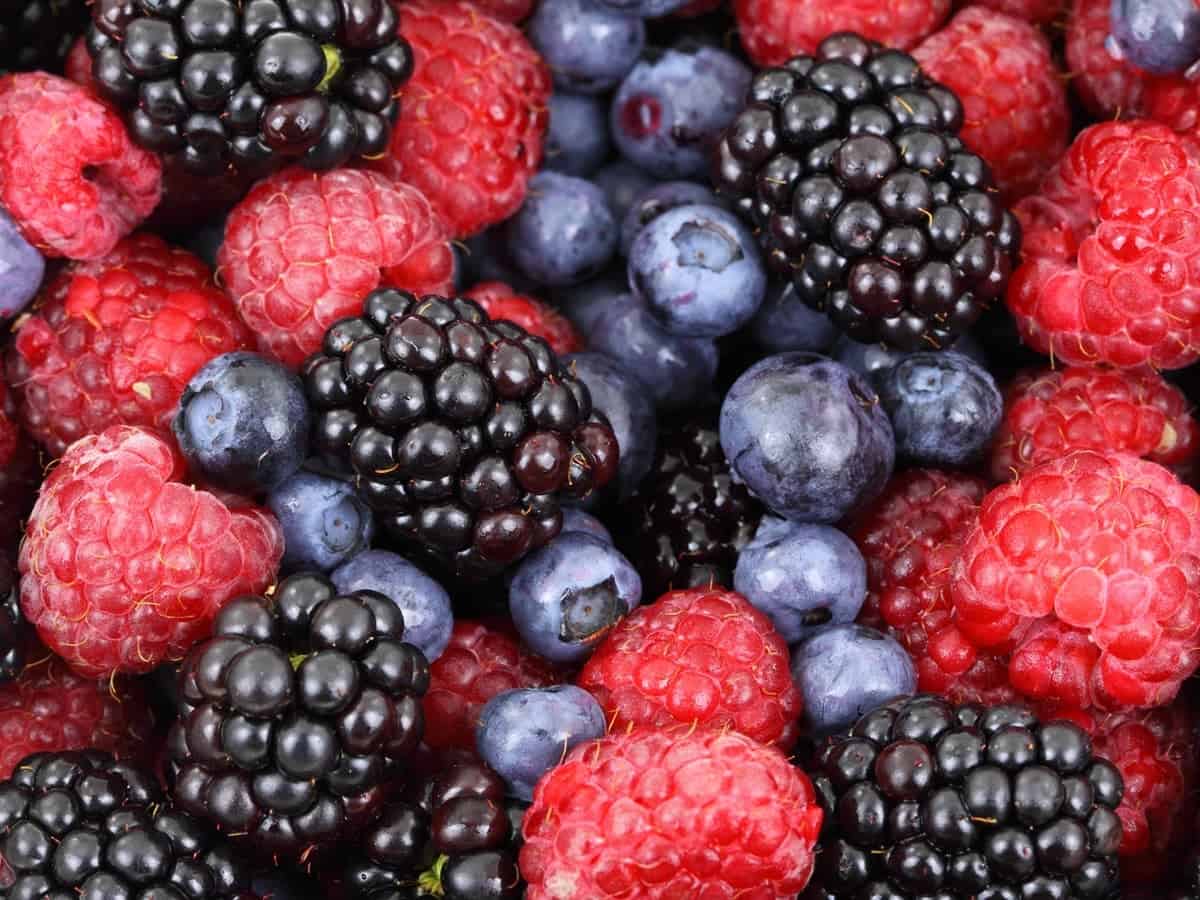
Berries are pulpy and small fruits that typically don’t have a pit or stone in the middle. They are often edible, brightly colored, rounded, juicy, and sweet-sour in taste. There are many different types of berries which are edible, but some can be poisonous to humans like pokeweed, nightshade, unripe elderberry, unripe red mulberry, and unripe white berry. There are so many different types of berries that are consumed around the world to make pies, cakes, preserves, and jams. They can be found growing in the wild or cultivated on berry farms.
In Britain, berries are often referred to as soft fruits, and the scientific use of the term berry is different from colloquial language. Scientifically, berries are any fruit that is produced from the ovary of a single flower. The outermost layer of the ovary wall turns into a fleshy, edible portion which is commonly consumed. This means that fruits like cucumbers, eggplants, bananas, tomatoes, and grapes are also berries. It also means that blackberries, raspberries, and strawberries aren’t actually scientifically called berries. This article will showcase the different types of berries that are commonly known berries according to general opinions.
Before we get into all of the different types of berries, check out all of the amazing health benefits of berries in our infographic below.
Different Types of Berries and Health Benefits
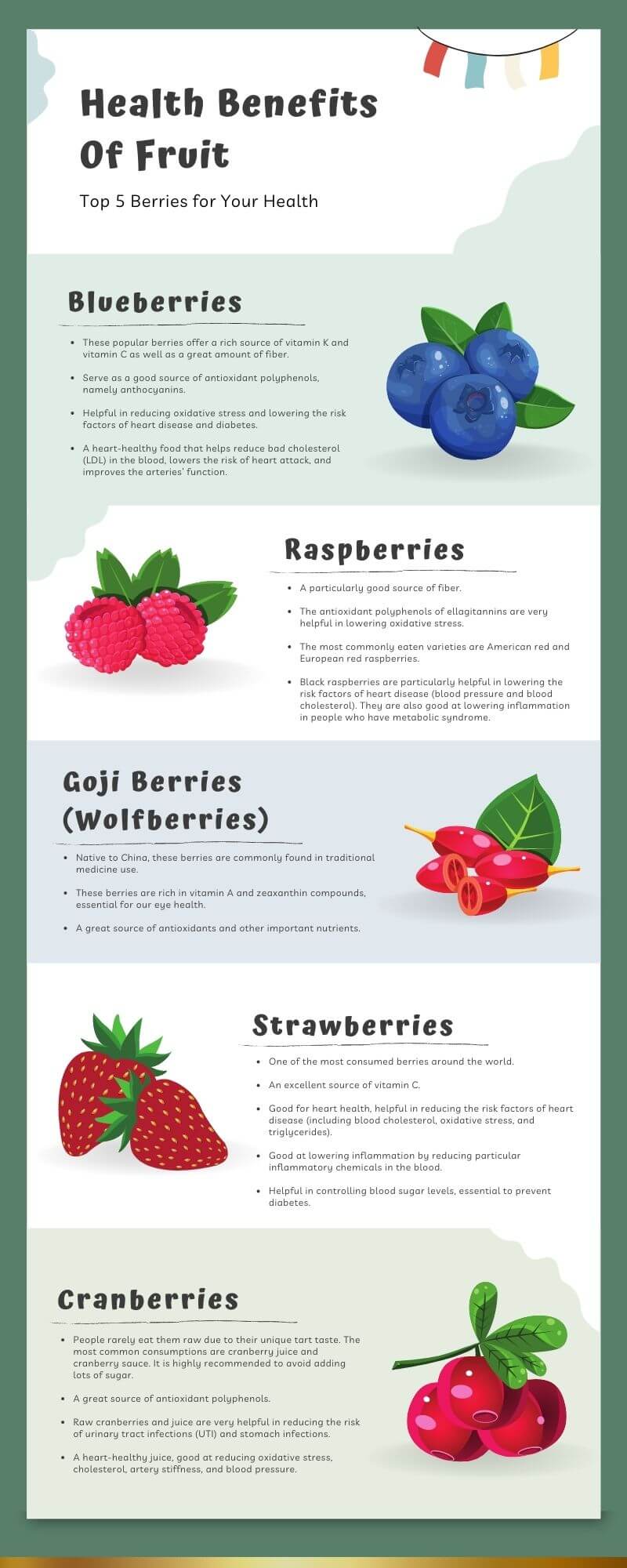
Different Types of Berries
Acai Berry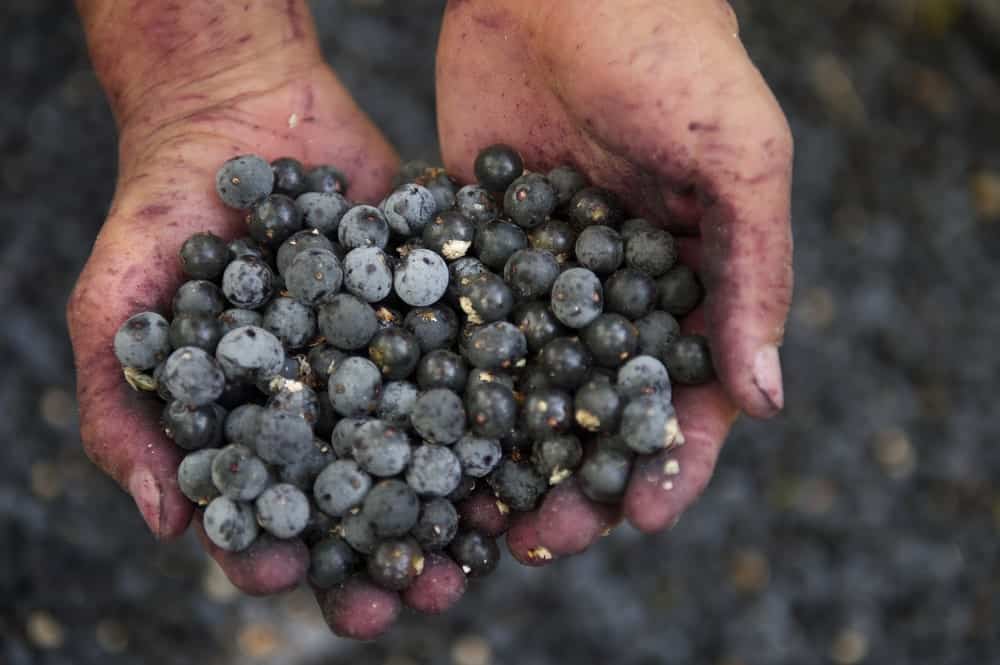
Acai berries have a sweet-sour or bitter taste with a chocolate-y aftertaste and have gained popularity due to them being now known as a ‘super food’. They have a high content of protein, fatty acids, and antioxidants. They promote weight-loss, heart health, and anti-aging effects. Acai berries are purple fruit that grows in palm trees native in clusters. They are native to the Amazon jungle in South America and
are pronounced ‘ah-sah-ee’ berries. They are really hard to buy fresh, which is why people usually buy powder made from acai berries to make smoothies.
Blackberry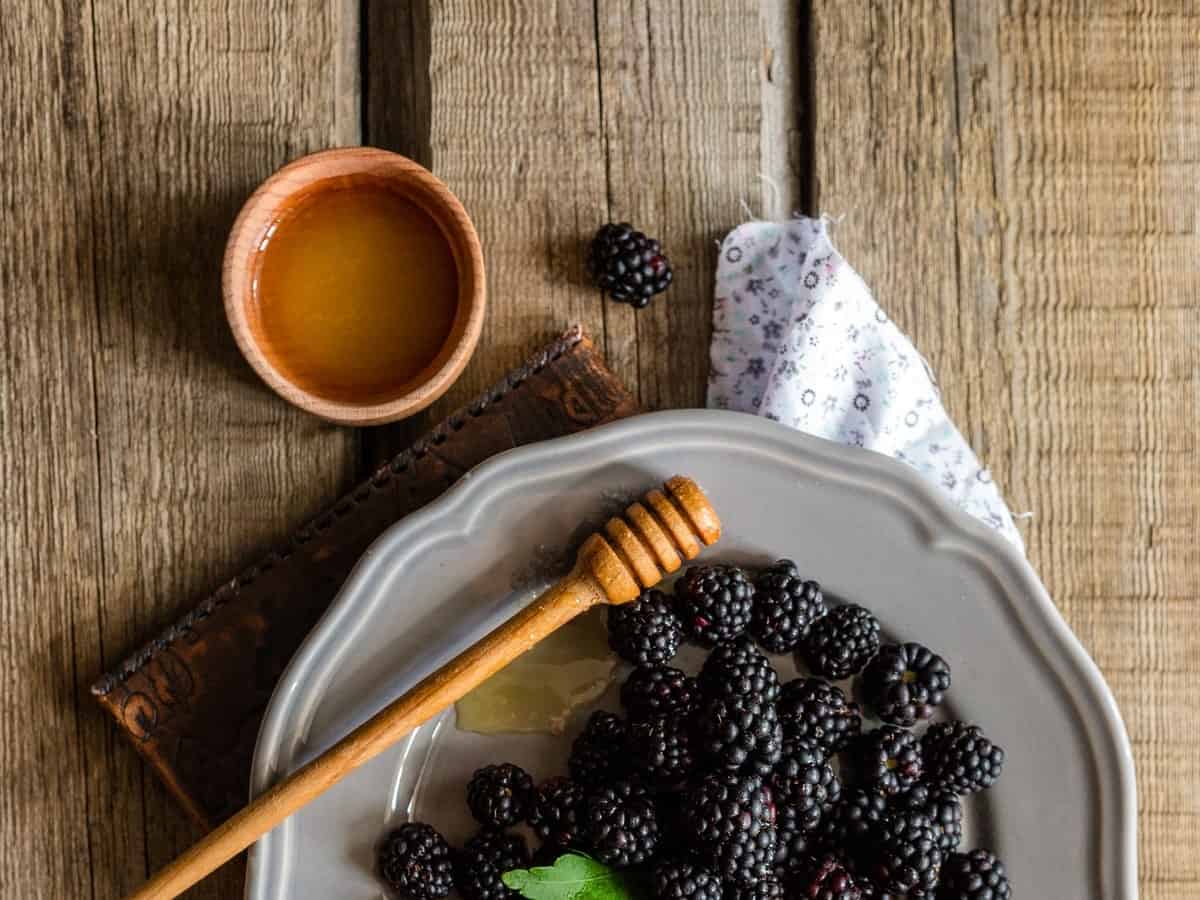
Blackberries grow in the wild in the South and Pacific Northwest regions; blackberry plants prefer the fertile, moist soil and mild winters that these regions have. The newer varieties of blackberries have been developed as more hardy so that they survive better in the cold but regions in Zone 6 still have a higher chance of growing them well.
They are closely related to raspberries and taste sweet-sour and are used to make jams, cobblers, pies, and even cheesecakes.. They contain manganese and Vitamins C and K1 and help to fight inflammation and cancer, as well as improve brain functions.
Blueberry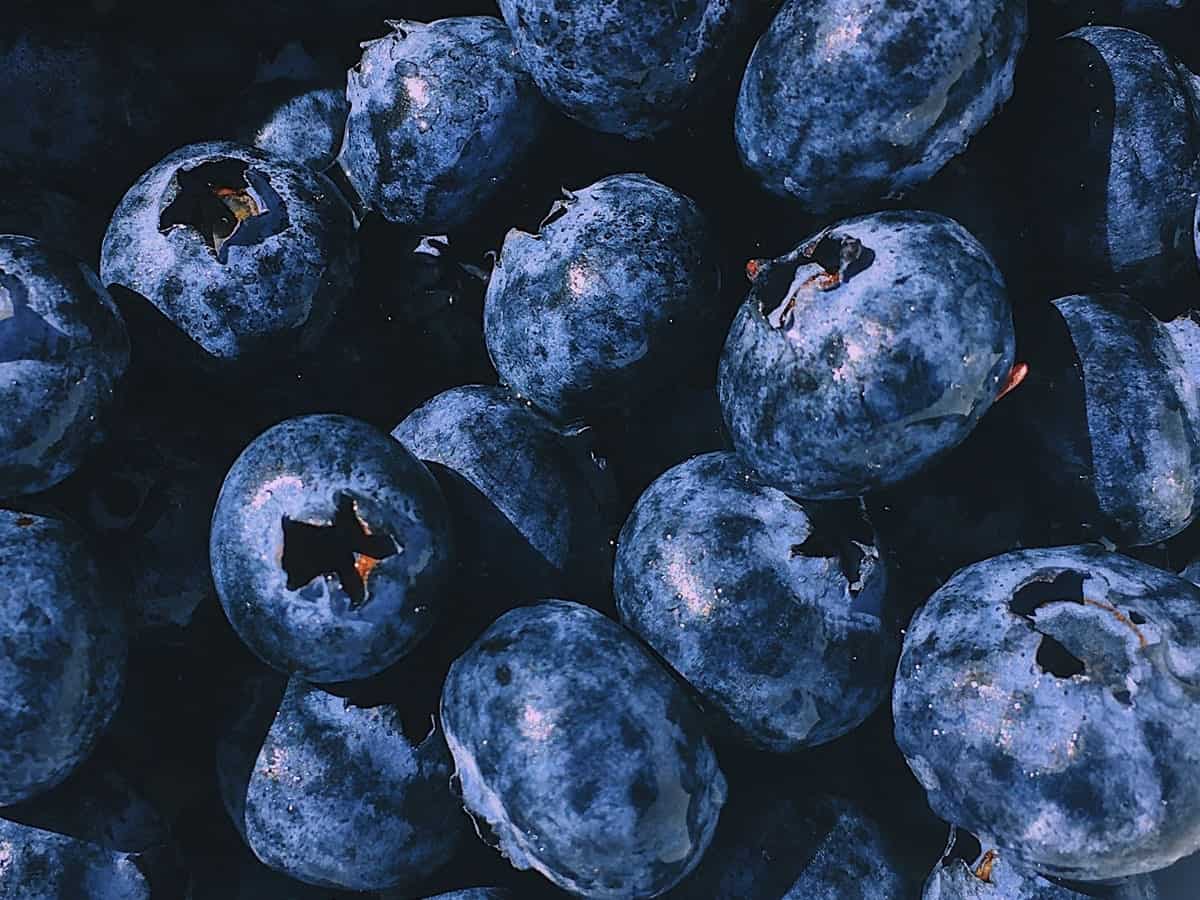
Blueberries are a sweet and juicy fruit, which are usually eaten fresh. They are also added to various baked goods and sauces. Recently, there has also been an increase in sales for berry wines. They taste sweet and tangy, which is why they are loved so much. The blue color of the berries also makes them great decorative food, which has granted them the label of ‘beauty food’.
Blueberries need an acidic soil of high pH values between 4.5 and 5.5. They have a relatively low-fat content and higher carbohydrates compared to other berries and have anti-oxidant properties and anti-carcinogenic properties. They improve insulin sensitivity, which means they are great for diabetic patients.
Boysenberry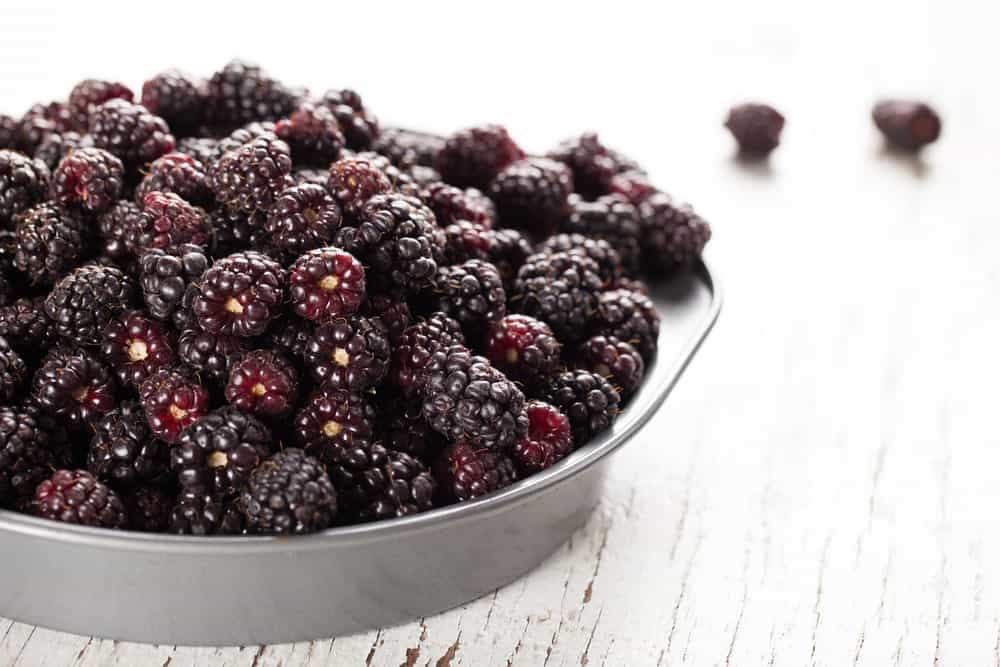
Boysenberry was developed in the 1920s through a mix of blackberries, raspberries, and loganberries. They were developed by Walter Knott, a botanist, on his farm where a sweet preserve was made from the fruit. The farm became famous, and now boysenberries are consumed around the world. They taste floral, tangy, and sweet, which is why they are commonly used in jams, cobblers, and pies.
Boysenberries carry amazing health benefits, which is one of the main reasons behind its popularity around the world. They improve the cardiovascular system by reducing blood pressure and help with Alzheimer’s diseases, inflammation, and cancer. This berry also improves the endothelial function of the body and have proven to have a positive impact on chronic daily ingestion.
Raspberry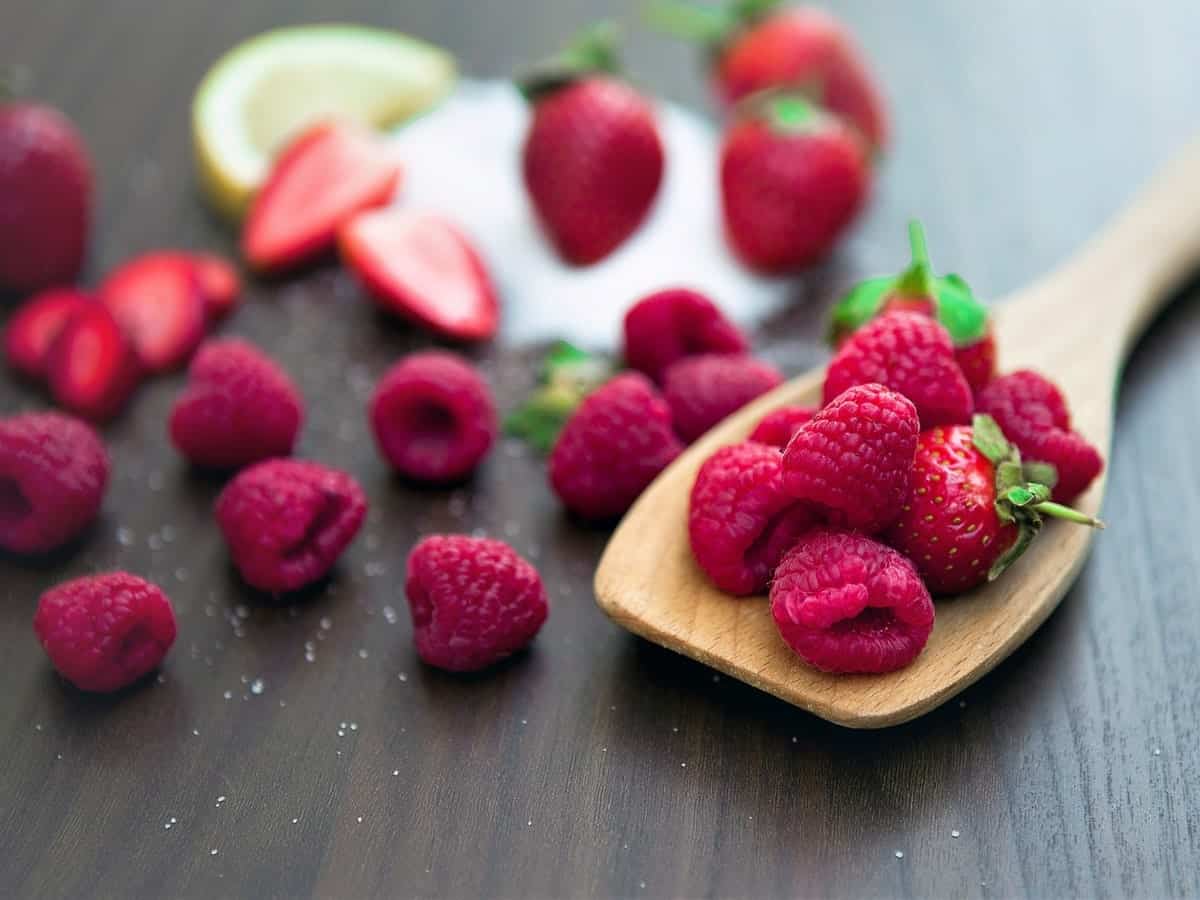
Raspberries have a really amazing vibrant color and unique texture to them that makes them a favorite among many people. They have a nice sweet taste and dense texture. They are usually eaten fresh or made into preserves, sauces, tarts, ice cream, and cheesecake.
Raspberries are hardy against the cold and grow in fertile soil and need at least 1 inch of water per week to survive. They have a good amount of vitamin C and K, as well as manganese and are known to have anti-aging properties and help with weight loss. They reduce the risk of metabolic diseases since they are high in fiber.
Chokeberry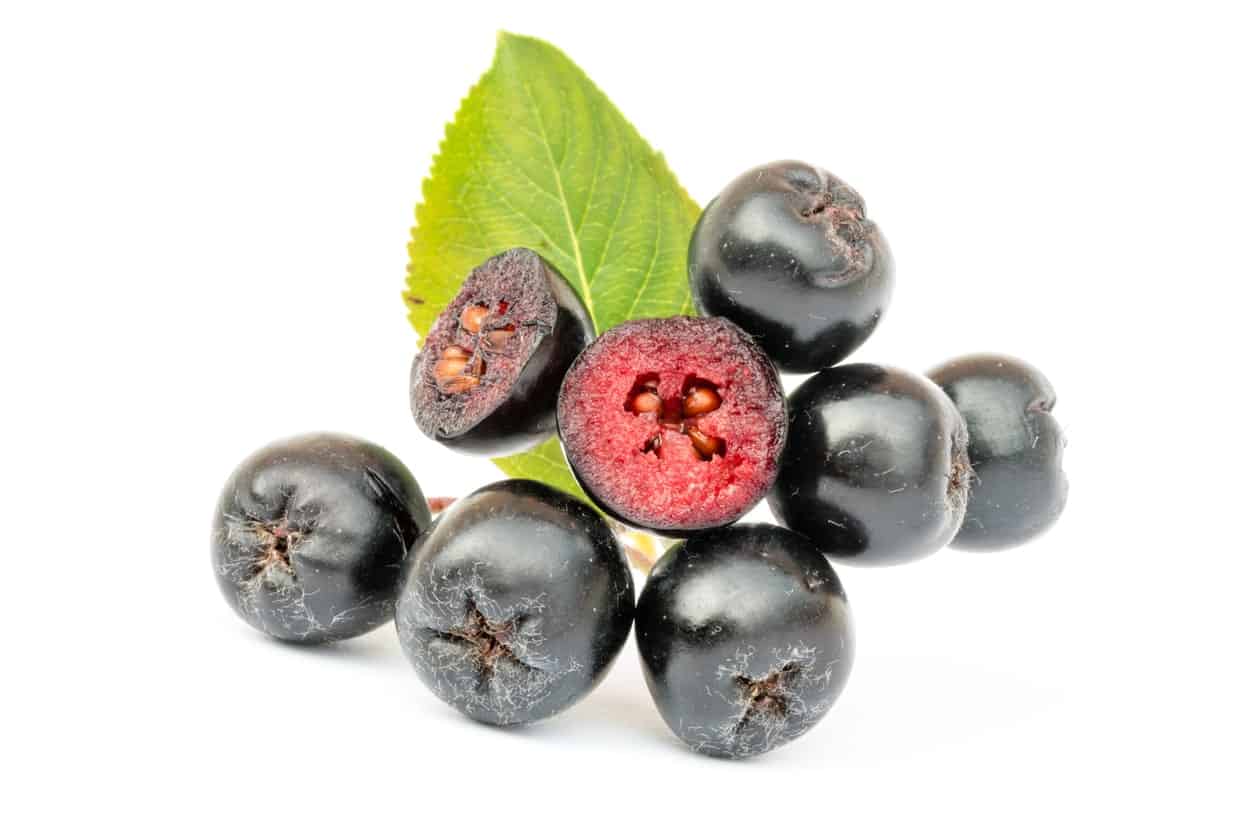
Chokeberries have an astringent, bitter, dry taste, which is why a lot of people prefer them in powder form. This dry flavor is due to the high tannin content, which helps make great wine, tea, and preserves. They are rich in Vitamin C and A, as well as iron and help to improve eyesight and lower blood pressure. The chokeberry shrubs are diseases resistant, drought tolerant, and can be grown under the shade of other trees. This makes them a popular choice for landscape plants.
Chokeberries can be red or black, but black ones are easier to obtain than the rare red ones. They help prevent inflammation and strengthen the immune system. They polyphenols in chokeberries also work as anti-oxidants and even serve as protection against UV radiation exposure.
Cloudberry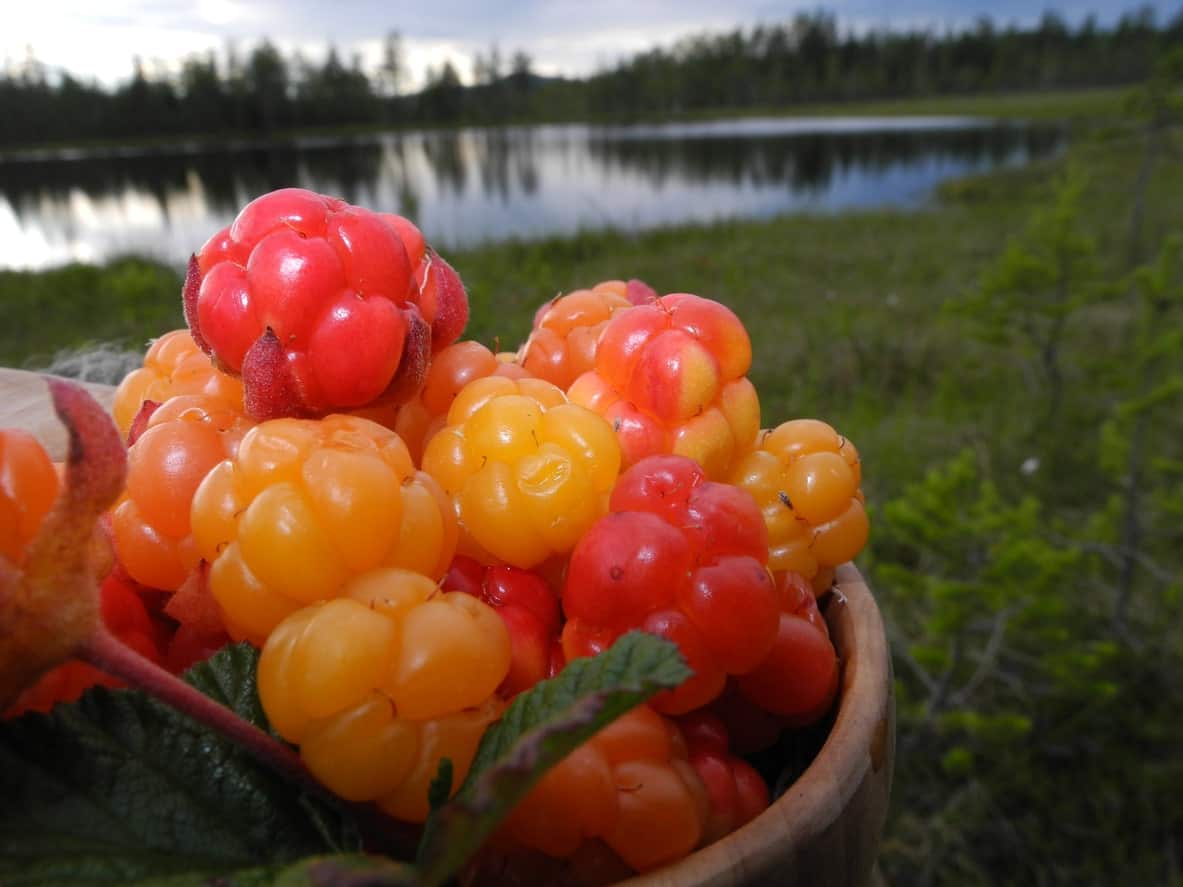
Cloudberries are an amber-orange colored fruit and grow in some of the coldest regions of North America. It is a rather bland type of fruit and has a slightly tangy aftertaste. The texture of this berry creamy, and is shaped like a cloud. They are commonly used as part of a detox routine and are known to help strengthen bones. They are a great source of Vitamin C and have high protein content.
Cranberry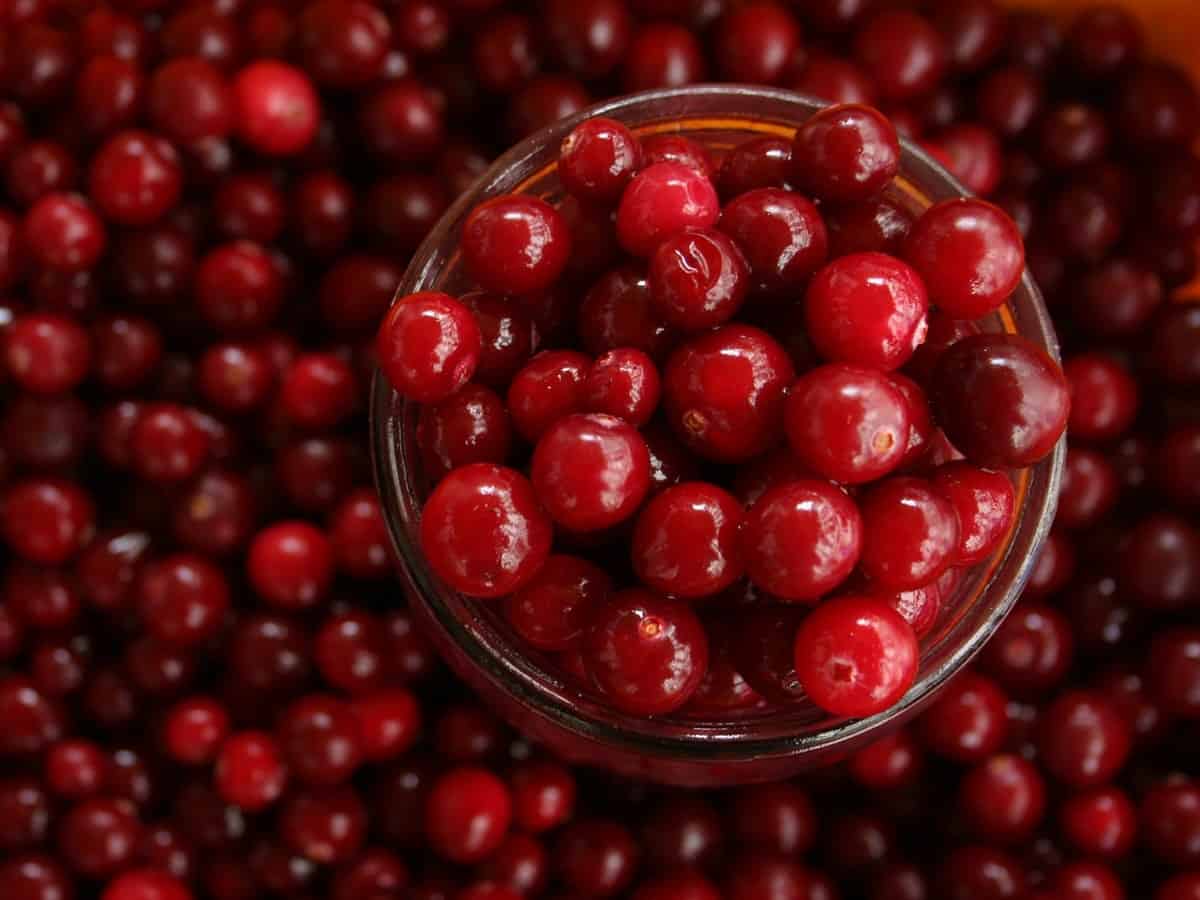
Cranberries are famously used as a sauce on Thanksgiving. Their tart, fresh flavor goes well with the turkey. These berries are one of the most famous types of berries since they are used to make all sorts of different edible products. For instance, they are used to make alcohol, jams, pies, and even juice.
Cranberries have a slightly sour taste despite the high sugar content. They also contain vegetable oil which makes them great as a treatment for urinary tract infections (UTIs). They also help improve gum health and are often taken as supplements as well.
Cranberries are grown in wetlands, need constant moisture and acidic peat soil. They also have a long growing season
Elderberry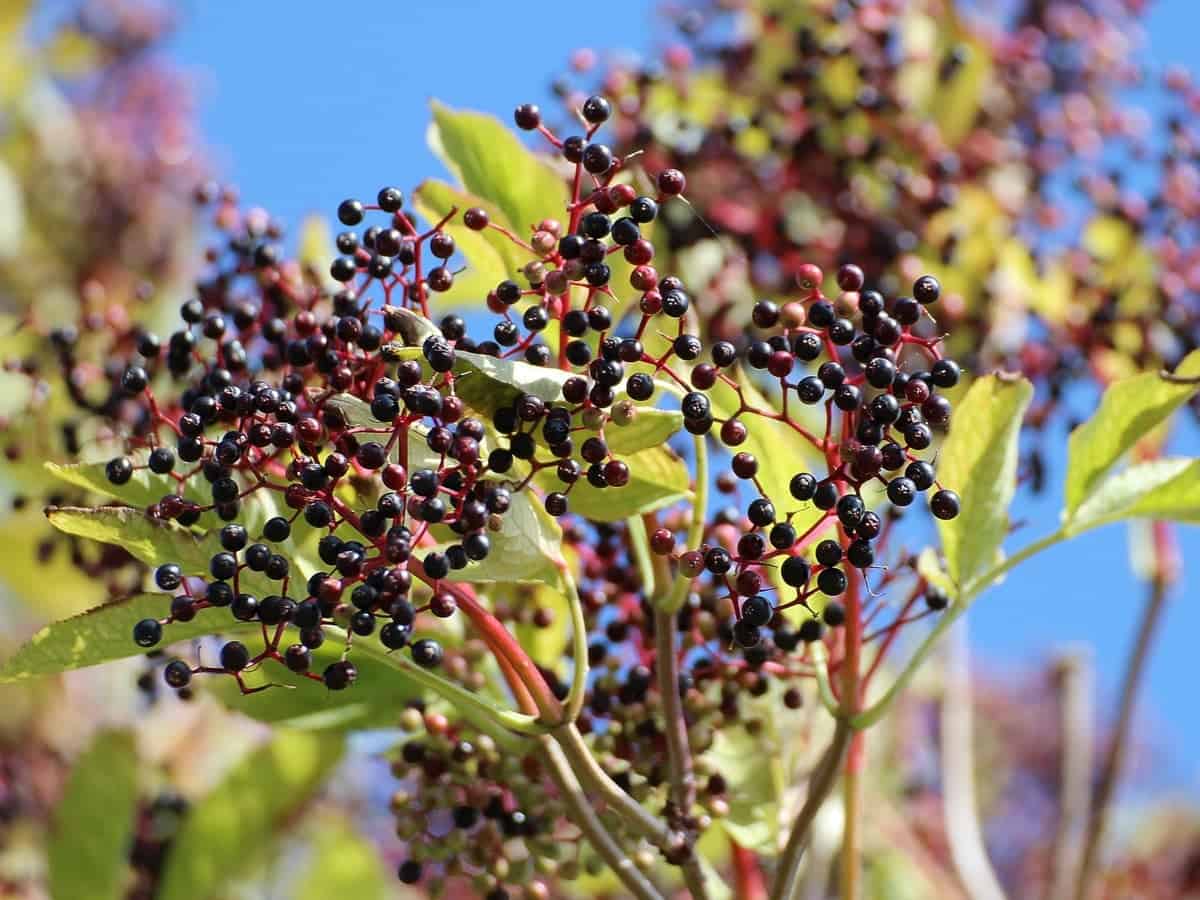
Elderberries range from dark red to purple, similar to currants. They make really great wine, syrups, jams, juices, and preserves. They are grown in moist, cool regions with cold winters. With a floral and tart taste, it’s no wonder why many people also commonly use them to make tea. Elderberries are famous for boosting immunity and combating allergies. They were historically used as a treatment for viral infections and as anti-influenza medication. They are rich in potassium, iron, and Vitamin A, C, and B6.
Goji berry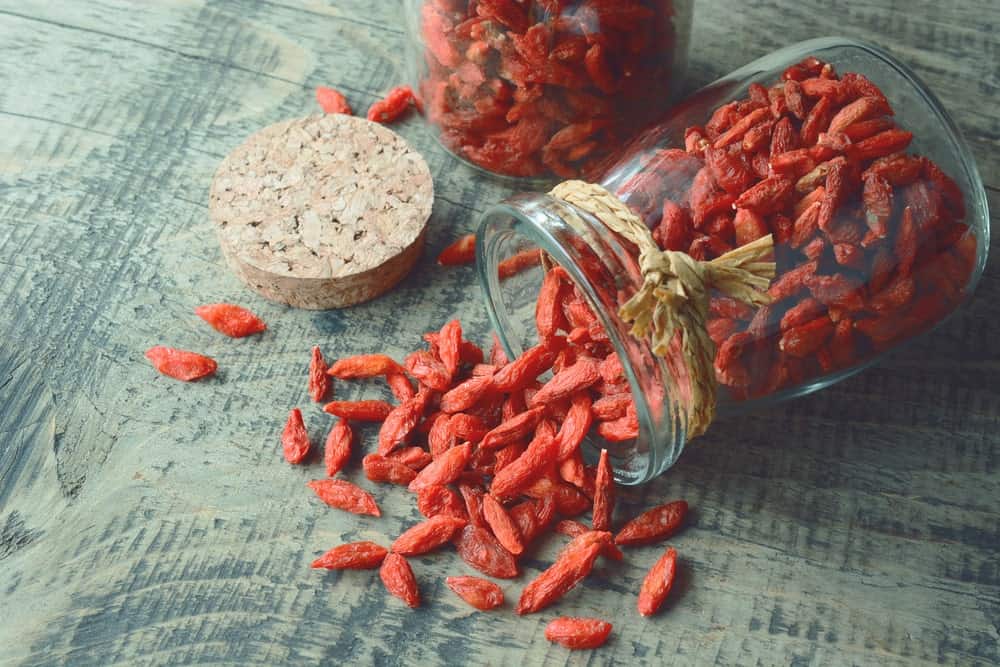
Goji berries have become really popular over the past decade and are usually sold in their dried form. They are bright red in color and have been hailed as a ‘superfood’. These berries are known for their reverse aging effects and help fight cancer due to their high content of anti-oxidants. They also significantly improve eyesight. Goji berries are rich in Vitamin A, copper, selenium, riboflavin, and iron.
Goji berries are native to the Himalayas and mountainous region of China. They are tolerant of the cold, poor soils, extreme heat, and drought. They have a great, unique taste that is flavorful, chewy, little sweet and slightly bitter taste.
Huckleberries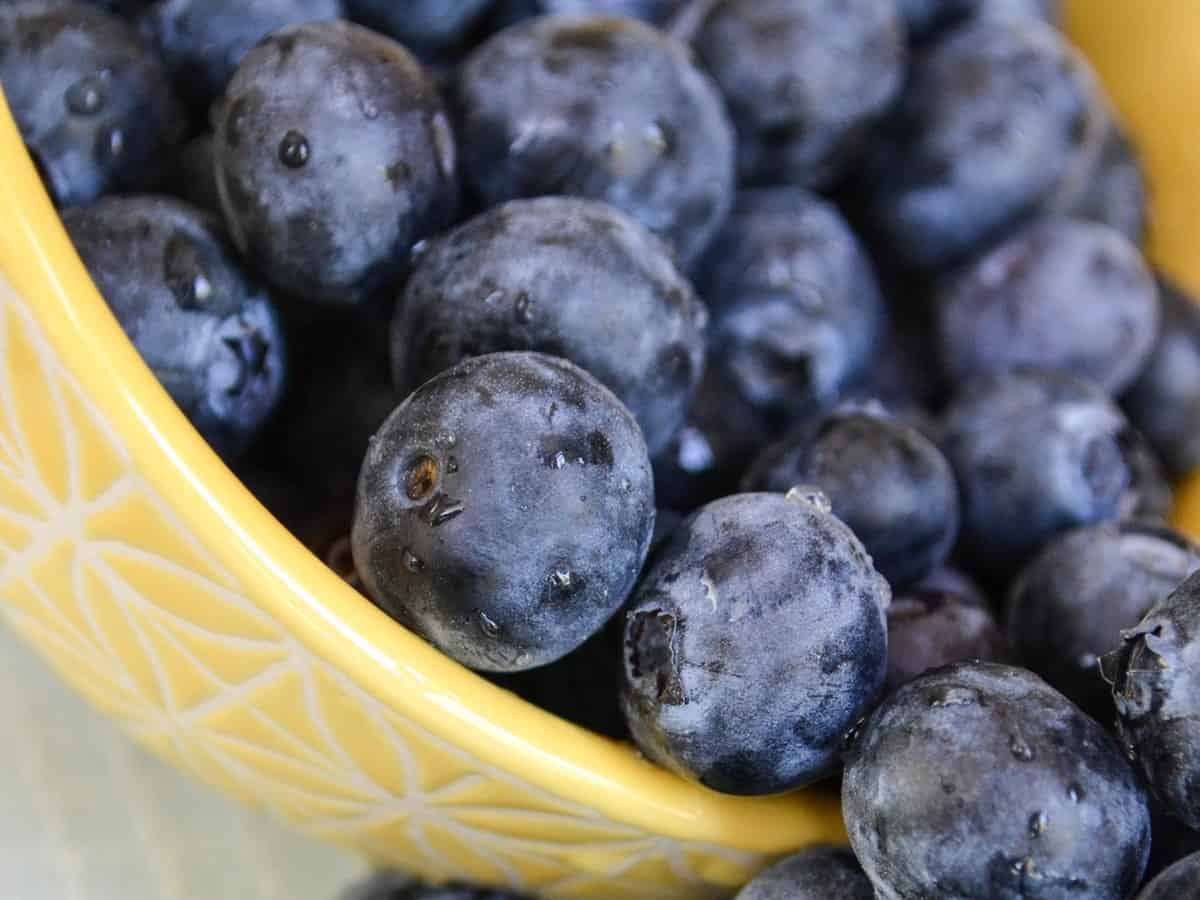
Huckleberries are very similar to the blueberry since they are dark blue-ish purple. They have a distinctly sweet-sour, woodsy taste that makes them a great ingredient for pies, candies, and cakes. They are also eaten fresh or made into jams or baked goods. Huckleberries have antibacterial properties, lower cholesterol, and improve pre-natal health.
They are mostly grown in the wild in lake basins, forests, subalpine slopes, or bogs. They are native to Western Canada and the Northwestern United States. The huckleberry plant has radiating, shallow roots that grow into an underground and turn into a bush. Mass level cultivation has failed due to the inability of the plants to fully root as wild plants do in non-native soil.
More Different Types of Berries
Juneberry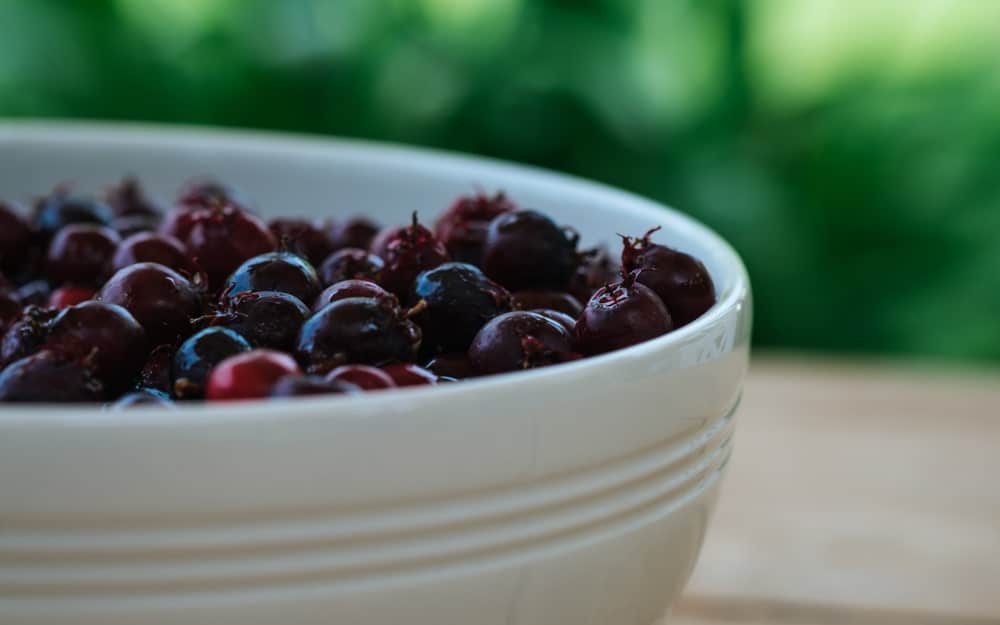
Juneberries can grow with ease in poor soils, cold winters, and drought. Harsh conditions are not detrimental factors to its growth. They are native to North America and are usually found growing wild in North America.
Juneberries have a nutty, sweet taste that makes them a popular choice for cakes and pancakes. They resemble blueberries but have a vastly different taste. They are rich in anti-oxidants and help to counter arthritis and inflammation.
Salmonberry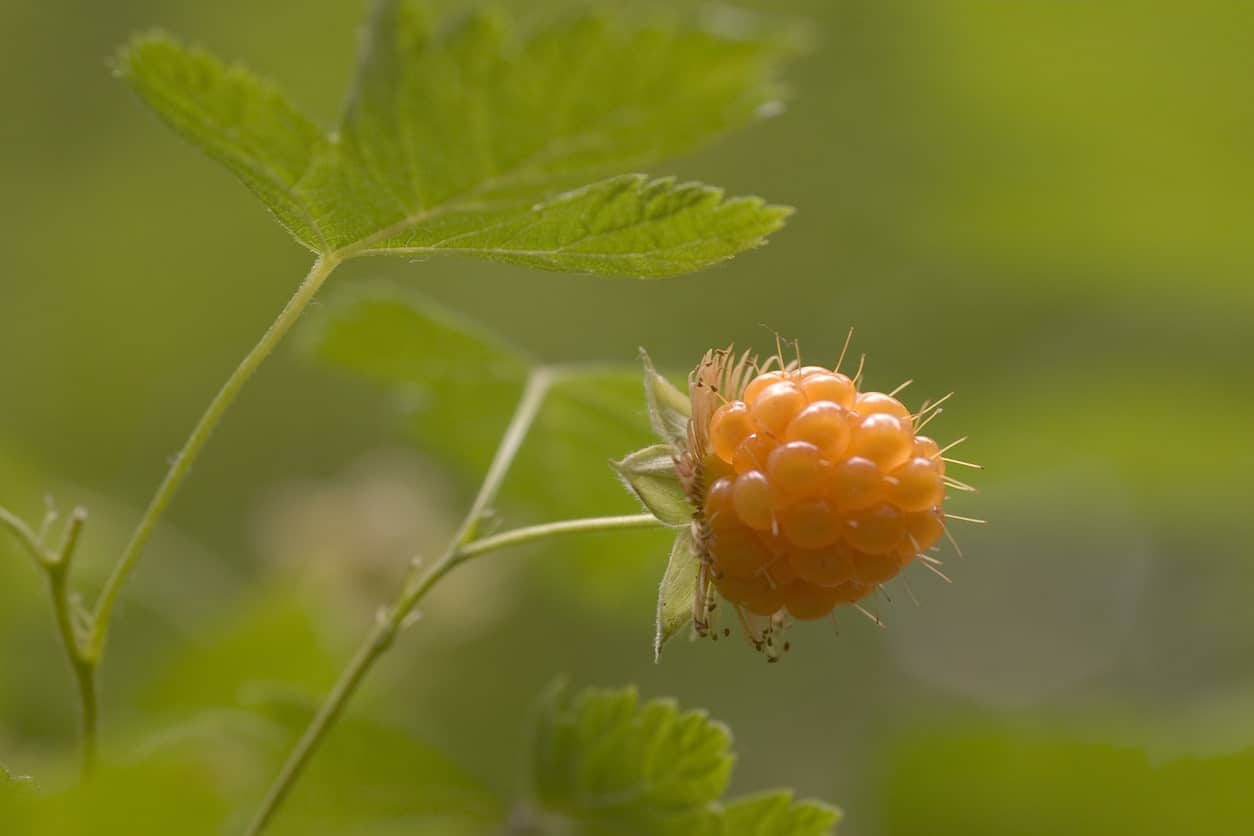
Salmonberries come from a perennial plant that is native to the regions of Canada and Alaska. They are red or orange and resemble raspberries in shape and are usually consumed fresh or made into preserves, syrups, jams, and even some savory dishes. They have a bit sour and slightly sweet taste and are very juicy. Rich in manganese and vitamins A, C, E, and K, they make a great source of vitamins and antioxidants. They help fight infections and stomach pain as well as other similar ailments. They are primarily cultivated, which is why it is they are mostly foraged for in the wild.
Strawberry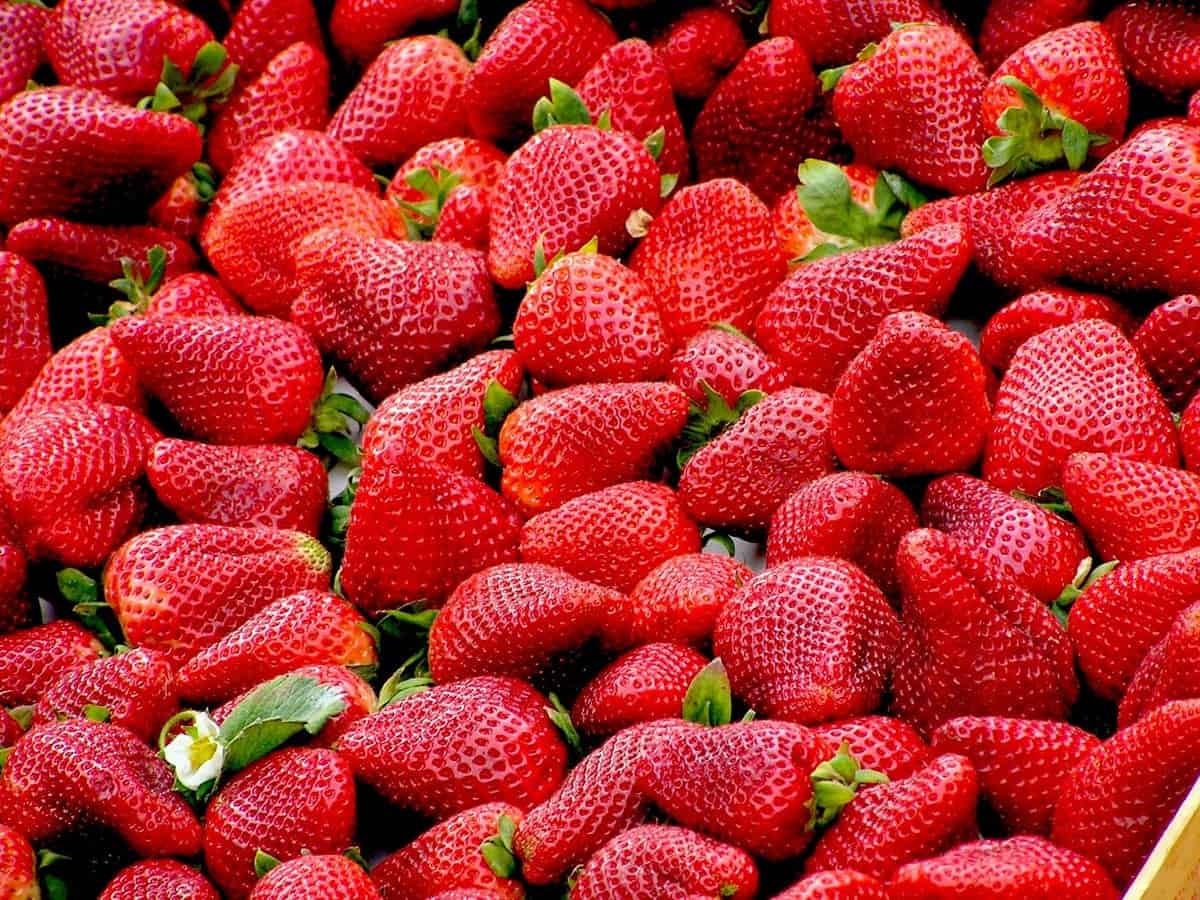
Strawberries have an intense flavor that everyone loves. They are sweet and sour, which makes them the perfect fruit for syrups, jams, cakes, preserves, milkshakes, muffins, ice creams, and many other dishes. They are even enjoyed after dipping them in chocolate or whipped cream. The artificial strawberry flavor is also commonly used in perfumes, hand sanitizers, candy, lip gloss, and a number of scented products. They are the largest berry varieties in the world right now and are consumed all over the world.
Strawberries have been shown to decrease the risk of cardiovascular diseases and improve metabolic problems in patients. They help fight cancer, boost the immune system, and improve eye health. They are also taken as daily supplements since they have a 148% RDA of vitamin C and 29% of manganese. In 2016, China produced 41% of the 9.2 million tones of strawberries produced around the world.
Tayberry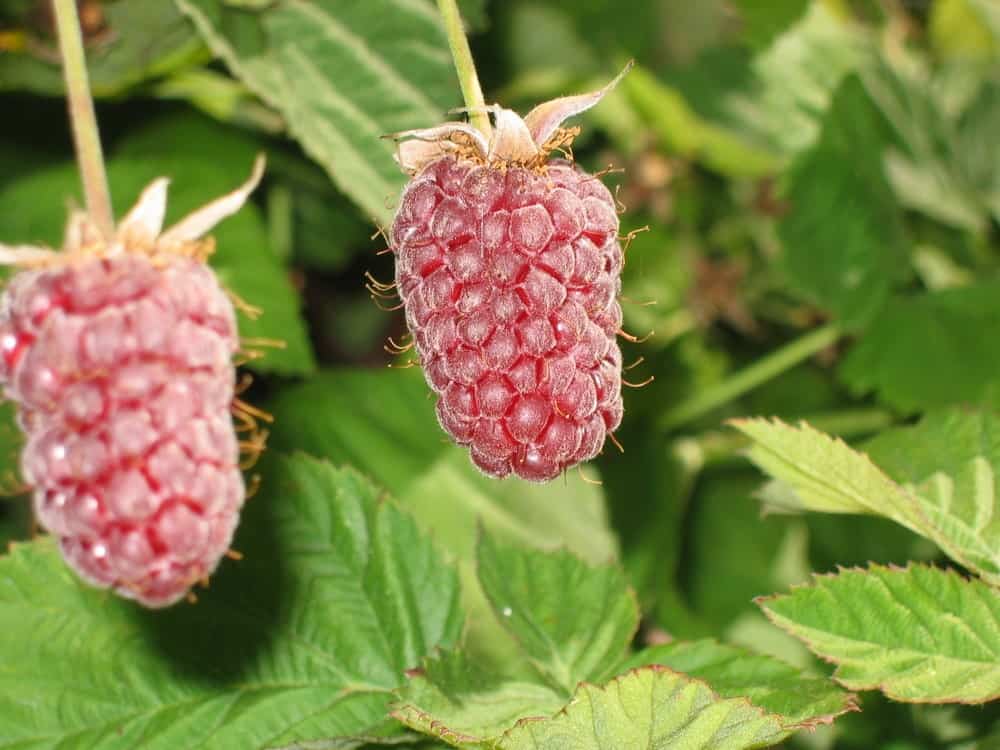
The tayberry is named after the river Tay in Scotland, where they were first discovered. Tayberries are a hybrid cross between the black raspberry and loganberry. They are a sweet, red fruit that grows in fertile, moist soil and are commonly used to make jams, pies, and wines. They are hardy against frost and have a decent size, which is why many people prefer them. Mass scale cultivation is uncommon since they are hard to pick by hand and can’t be harvested by machines.
They have a high content of vitamin C and flavonoids and promote lower cholesterol and healthy hair. They also repair cells, which is a great way to stay healthy and avoid aging signs.
White Mulberry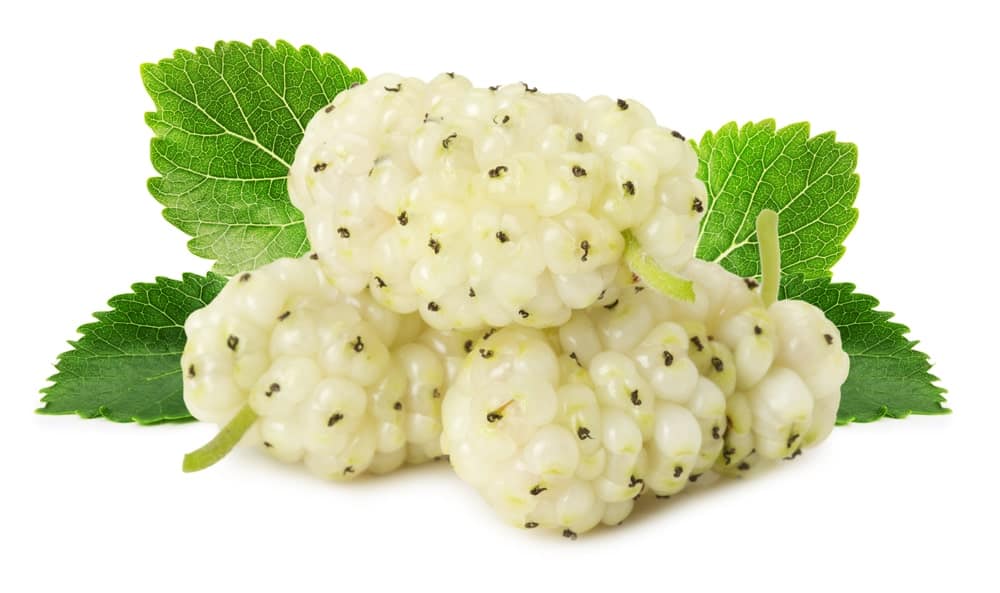
White mulberry leaves are the main food source of silkworms, which is why white mulberry trees were bought from China to the United States. They helped boost the silk industry, but the fruit is unpalatable and quite bland. White mulberries are usually sold in their dried form and have a high content of iron and vitamin C and K. They are believed to help prevent diabetes, but there isn’t much research for this. It is important to consume them when they are fully ripe since they are poisonous to humans when unripe.
Red Mulberry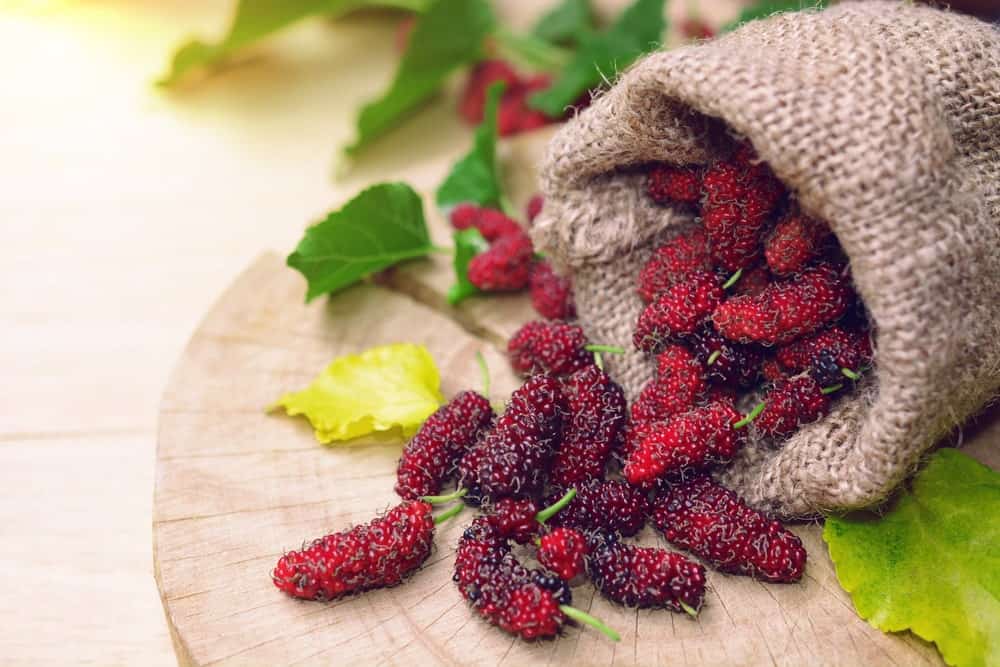
Red mulberry trees are native to the United States but are slowly being replaced by white mulberry trees which are also used for silk production. The fruit is highly perishable and leaves a huge mess on hard surfaces and sidewalks when it falls from the tree. They have a high content of vitamin C and K, as well as iron and are really rare to find since they aren’t cultivated on farms. They are fermented into wine or used in pastries and cakes.
Logan Berry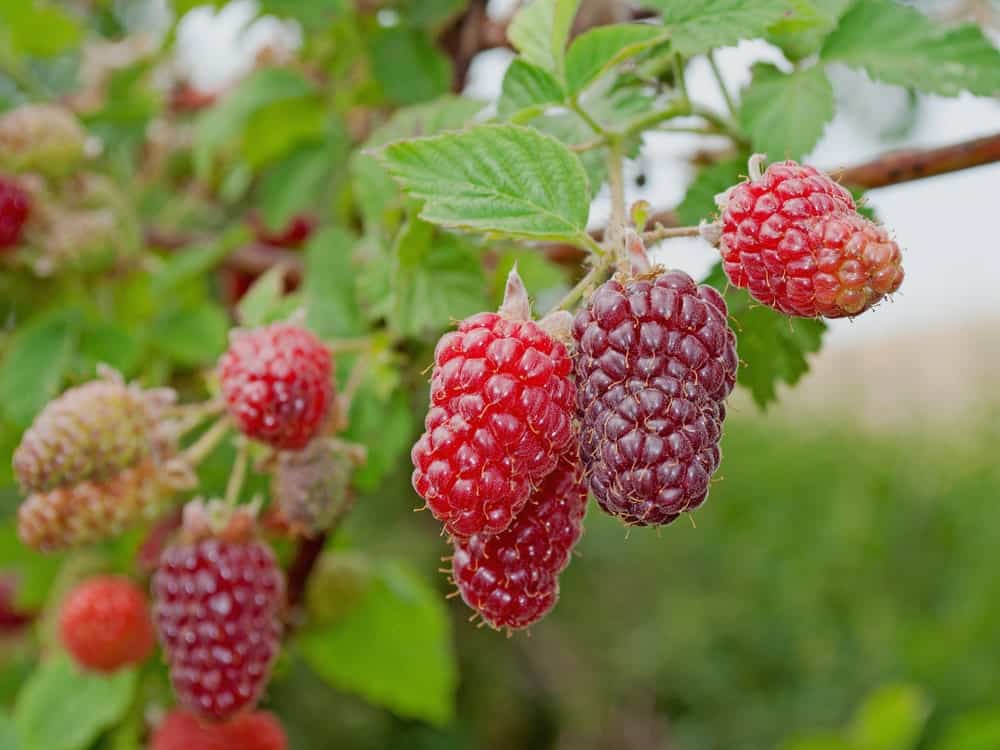
The loganberry is a cross of the blackberry and raspberry and their taste and shape is also a cross between the two. It was originally cultivated by accident by a horticulturist in the late 19th century. The loganberry has a distinct taste and is mostly used for jams, pies, syrups, crumbles, and juices. Loganberries can be obtained fresh or canned in the UK where they are used to make English Sherry Trifle. They are also used to make a popular beverage in Southern Ontario and Western New York. They contain manganese, vitamin C and K, and folate, which helps to make the body healthier.
Indian Gooseberry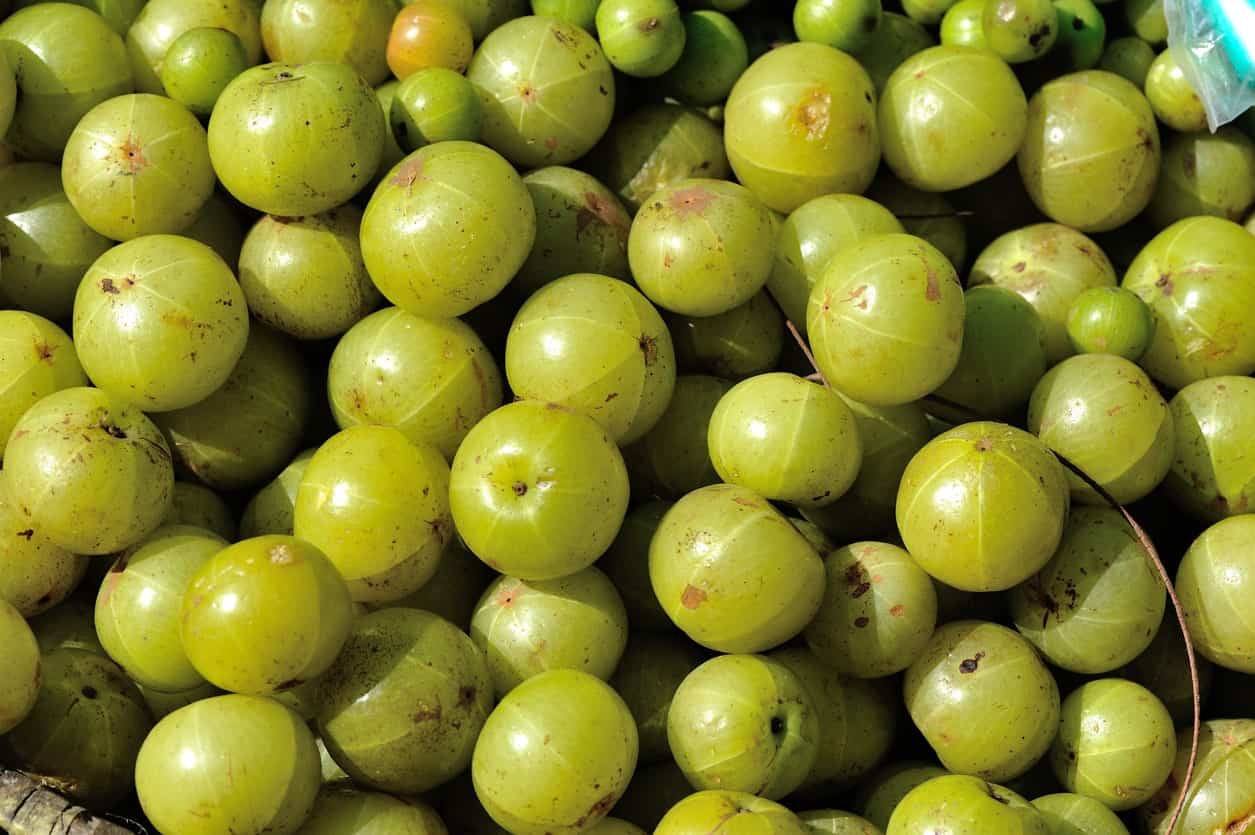
The Indian Gooseberry grows on a small to a medium-sized tree in India and is also known as Amalika. It has been researched a lot for its health qualities, which is why many medicines in India are often made from Amalika. They are also pickled with salt, oil, and spices. They taste very tart and sour, and are
commonly sold fresh, frozen, canned, and dried. They also have a little sweet taste to them that makes them akin to the lemon. They are quite notorious and have a healthy amount of anti-oxidants.
Black Mulberry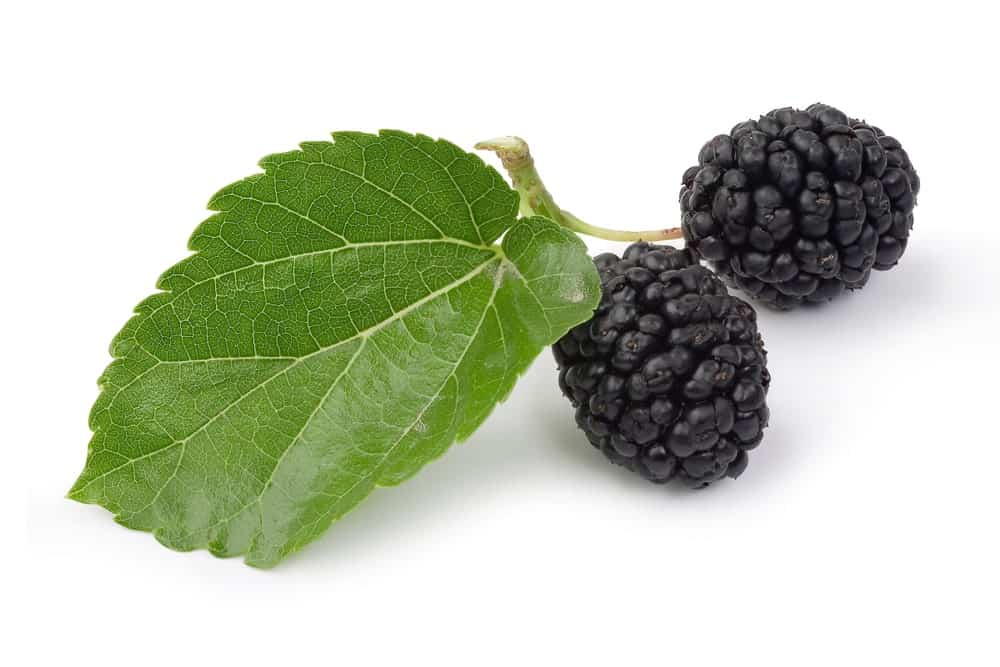
The black mulberry is very close in resemblance to the blackberry. It comes from the flowering part species of the family Moraceae. They are found in Southwestern Asia, where they were grown for so long that the precise natural range is actually unknown. They have the highest number of known chromosomes on earth at 308. Southern cooks use them in all kinds of dishes such as pies as a replacement for blackberries. While it only grows in Southern regions of Asia and the Middle East, the largest documented concentration of the black mulberry tree is found in a vineyard in Slovakia.
Black Currant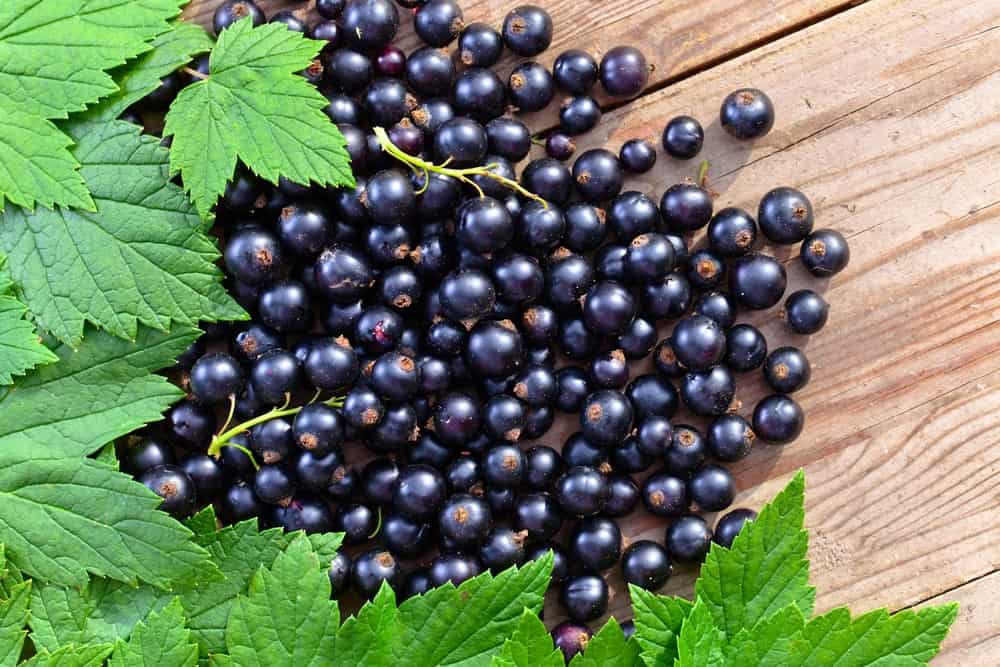
Black currants are grown in a woody shrub and belong to the Grossulariaceae family of berries. They are native to the temperate regions of central and northern Europe and Northern Asia and thrive in moist, fertile soils, in environments that have a somewhat cool temperature. They can be grown domestically and commercially and can be harvested by machine and hand, which makes them easy to plant on a mass scale.
The fruit contains a high content of vitamin C and polyphenol phytochemicals. The Black Currant is used to cook different savory and sweet dishes, but mostly they are produced for jams, jellies, syrups, and juices. Black currants are also used in alcoholic beverages, medicine, and dyes.
Sugarberry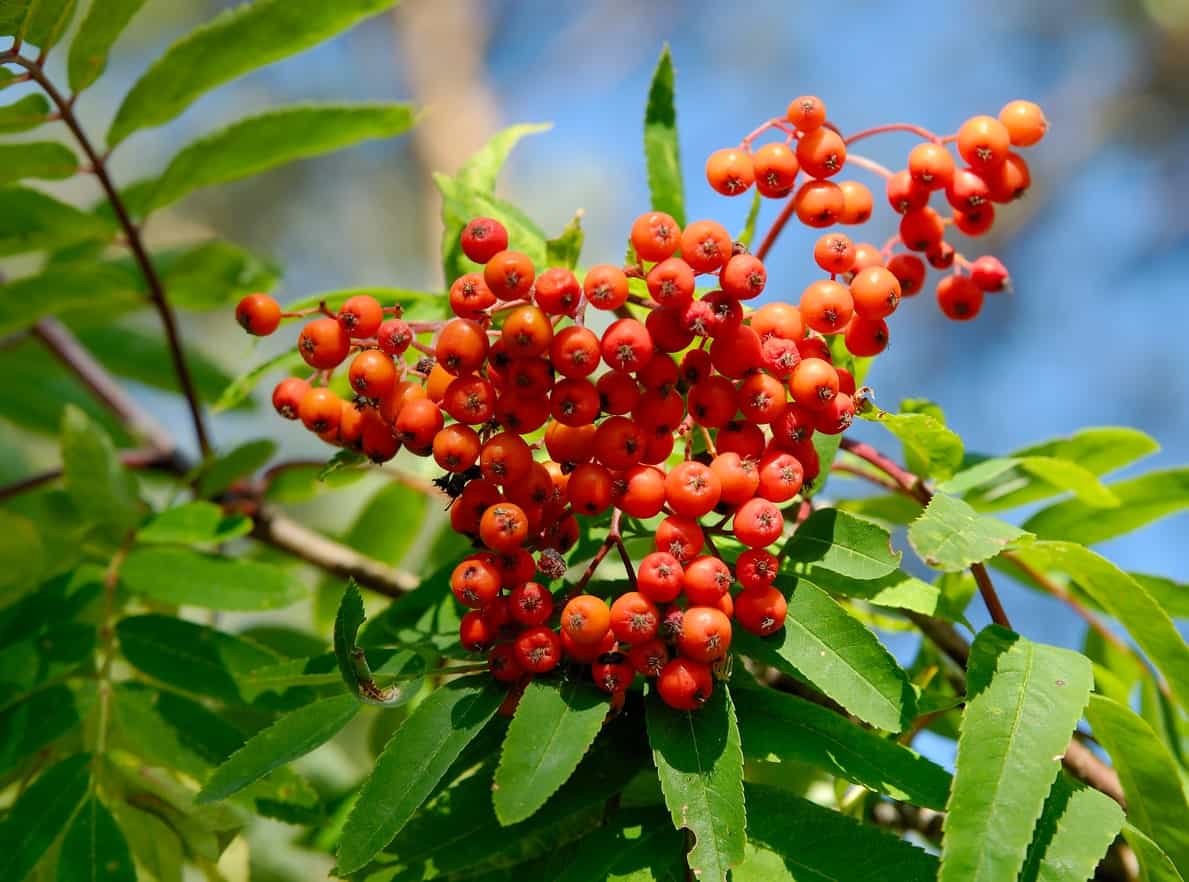
Sugarberry trees are found in the southern regions of the United States. The trees produce orange and yellow fruits that are often consumed by insects and birds. They are commonly known as the hackberry or southern sugar hackberry. They aren’t popular consumed and are mostly cultivated for their wood.
Lingonberry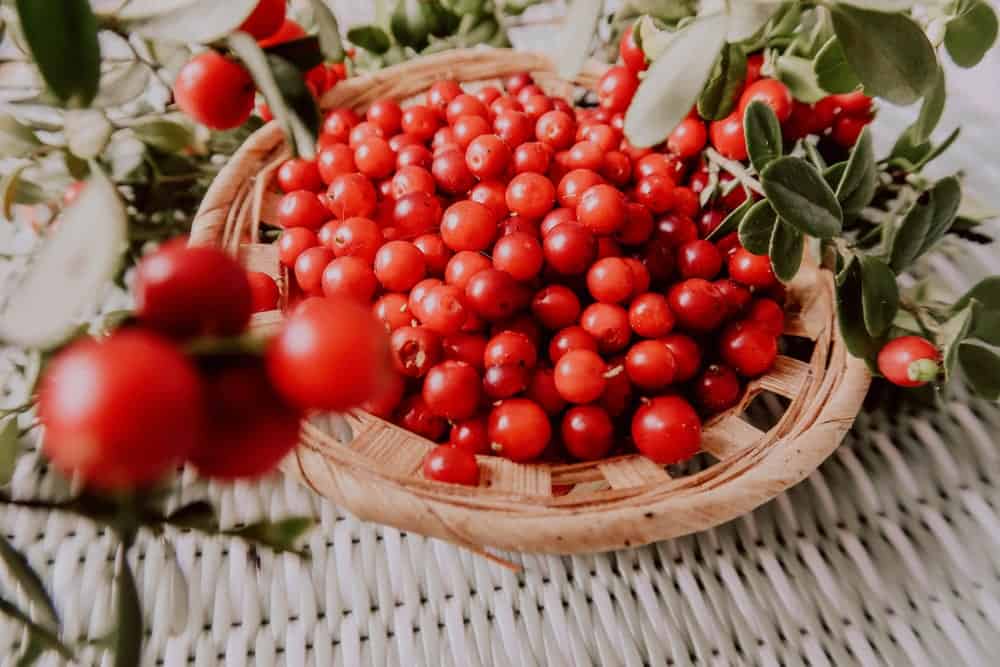
Lingonberries are full of healthy nutrients like flavonoids and vitamin C. They are used in many commercial drinks and powders. Commonly associated with a reduction in plasma markers that caused inflammation and healthier gut microbiota, but these associations are not backed up by any research.
They are grown on a short evergreen shrub that is native to the Arctic tundra and boreal forest in the northern hemisphere. They are picked in the wild since they aren’t commonly cultivated except in U.S. Pacific Northwest. They are part of many dishes in Russia and northern Baltoscandia.
Berries are really good for one’s health since they contain antioxidants and are often rich in vitamin C. They have a great sweet-sour flavor that makes them a great ingredient in jams and syrups all over the world.
Get Excited About The Different Types of Berries
Now that we have gone through the different types of berries have you picked a favorite and a new one that you would like to try! Have fun eating as many of the different types of berries that you can.
You Might Also Like:
- The Yum Berry is YUM and 10 Fun Facts About this Exotic Fruit
- How to Make Fruit Salad
- The Top 10 Fruit Candy Brands to Indulge Your Sweet Tooth
- 14 Different Types of Root Vegetables
